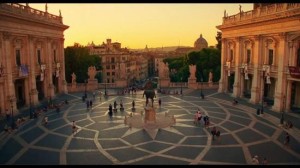+39 389 59 75 184 info@rusrim.com +39 329 448 3644
Excursion in Rome with private guide and car
Private tour in Rome
Private tour in Rome 6 pax – Eur 60 / h – Max 10 pax + Private Guide with car
All private car tours in Rome – tours around Rome – Tivoli fountains tour – Roman Lakes and Castles vulcanic area exursion from Rome – Abruzzo mountains tour
CAPITOLINE MUSEUMS ROME
Luxury private tour in Rome – local guide with car
The Capitoline Museums rise on the homonymous Republican Rome hill, once occupied by the most important temple in the city, the Temple of Jupiter Capitoline (6th c. B.C.), the ruins of which lie under the Conservators Palace. During the early Middle Ages, but still today, the Town Council took place there (13th c.). It considered the hill the place of the civic power: here executions took place, flocks pastured (hence the name of Monte Caprino) and Petrarca set here his symbolic coronation as a poet in 1341, marking the beginning of the renovatio urbis which would continue during the next two centuries and would turn the Hill into today’s monumental complex. In 1471 Sixtus IV gave the Roman people some ancient bronzes which originated the Roman archaeological collections that can boast many masterpieces. The bronze statues, which can be seen in the Conservators Palace, were placed in the zone closed by the Senatorial Palace, that was erected on the State Archives of the ancient city, the Tzbularium (1″ c. B.C.). Here is a splendid view of the Forum. As regards the ancient arrangement of the monumental complex towards the Forum, the new hill opened out towards Campo Marzio and the Middle Ages and the Modern quarter surrounding it; this was demolished because of the construction of the monument to Vittorio Emanuele II (1885-1927)
Capitoline museum Rome private tour – Original music Adel Karanov Rusrim.com
Steps of St Mary in Aracoeli and of the Capitol and for the excavations of Via dei Fori in the first decades on the 20th c. An example of Middle Ages buildings is the left side of the entrance staircase to St Maria in Aracoeli (7th and then 13th c.). In 1538 the restoration of the square and the buildings started by design of Michelangelo: the artist placed the gilt bronze equestrian statue of Marcus Aurelius in the middle of Campidoglio Square (now replaced by a copy) and modified the two pre-existent buildings. Moreover, he planned the New Palace, built during the subsequent century, which closes the square towards
Capitoline museum Rome private tour – Original music Adel Karanov Rusrim.com
the Church of Aracoeli. We owe to his superintendence the facade of the Senatorial Palace, made up of big pilasters — the most spectacular Michelangelesque innovation in ornamental architecture — and a monumental double staircase. Two representations, one of the Tiber (right) and one of the Nile (left) were placed on the two sides of the stairs, and then also the Sitting Minerva statue, considered the Goddess of Rome ,(Domitian age). The artist also designed the entrance staircase to the monumental complex, the balustrade on Campo Marzio and the flooring, completed in 1940 following greatly the original plans. Starting from 1563 the Conservators Palace was restored. It showed on the façade the colossal Head of Constantine and the She-Wolf; symbol of the city that, according to the legend, breast-fed the founders of Rome, Romulus and Remus. The facade was restored in giant order and an entrance staircase was added on the first floor; the numerous statues were arranged in the inside courtyard and in the frescoed rooms of the Town Council. The huge amount of ancient collections led to the construction of a new museum: the construction works of the New Palace started in 1603 and ended in 1667.



 Русский
Русский Български
Български Français
Français